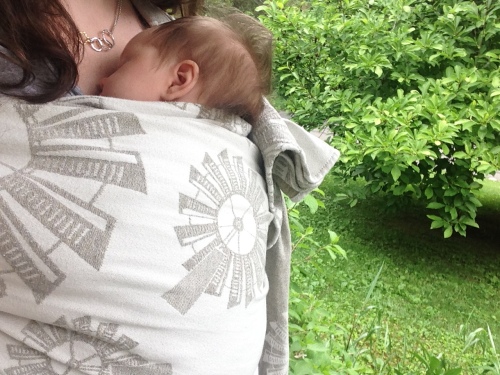
I haven’t posted many pictures of my house (this house, at least) in a while. It’s been hard to catch a moment during the day, for one thing; and photographs at night all look a little spooky, no matter how well-lit. And then there’s my perfectionism: everything has been moving around the house for the past 18 months we’ve lived here. The rooms keep changing function, and the furniture moves in a circuit between the garage, the two living rooms, the dining room (in which we never dine) and the bedrooms, which range in size from extravagant to miniature. This room, the front living room, is huge (in sort of a bowling-alley fashion) and bright, thanks to the large bay window (let’s just not talk about how that window fares when faced with massive amounts of melting snow). I have discovered, at least, that fiddle leaf figs thrive in this light; for a while, the room was primarily furnished with three large fig trees and a white couch (I am my mother).
If I could, I would tweak a few things in this picture. I would have made sure that you could see the other pine shelf, which intersects with the one you can see at a right angle (it’s shorter, and where I keep my laptop and useless old books). I would have made that monitor go away (to say nothing of its tangled cords). Darwin, I think, could stay. But then this picture, and this post, never would have happened.
So here it is. We recreated the shelving situation that we had in Colorado, which I love (Ikea Billy shelves with glass doors). I especially like the corner here; we didn’t have one last time. The walls are cut up here by baseboard heat that we can’t block, so the bookcases had to form an L. We were left with the mirror-image L (on the left side of the photo), which has baseboard heat at the bottom. Ricky, inspired by the internet and by our Hartford friends K and J, wanted to make a standing desk. I will admit to skepticism and an impractical preference for antiques; I didn’t want things to get too “Ikea.” (I am fond enough of Ikea, but only when counterbalanced with some creaky, old, impractical things with delicate finishes that pose barriers to ordinary use.) So we installed two boards above the heaters; one at counter height (my preference), which you can’t see here (huge fig tree in the way) and one at standing height, for Ricky.
And then I scrounged a bunch of art from around the house—including several paintings that were my grandmother’s, a photo of the chapel where we were married (which belonged also to my grandmother, who was also married there), and a painting of a chicken that my mother gave me, which I especially love right now because CMW loves to talk about “shickens.” She has even been known to count in units of poultry: “1….5…..shicken.” If one of us is tired or upset, she murmurs, “‘s’ok, shicken.” (The ginger jar and brass giraffe have also found their places here.)
I was also excited to learn that the $49 Ektorp slipover fits my nearly deceased Pottery Barn couch; it’s hardly worth paying $600 or some such madness for a new “real” cover for it (thanks, cats), but this Ikea one will help us limp along a little longer, til the next unfortunate yogurt, pizza, or cat-related encounter. When I went to Ikea yesterday, I also found a replacement that allowed me to move this low white cabinet behind the sofa; in its place, an Ikea As-Is find that I was strangely drawn to at $400, flat-packed, and obsessed with at $99, fully assembled:

It seems almost like something out of Alice and Wonderland. I can’t help my irrational attraction to its pill-like feet and random drawers. Mine is missing one drawer pull (a small price to pay for saving $300 and, more importantly, not having to put it together), but I have a ceramic turtle knob around here somewhere that would be just the thing. I’ve also managed to create here a standing desk for CMW, who happily smashes along on the Underwood. I figure that it’s lived through many decades already, and is unlikely to be done in by one solitary toddler (famous last words).

Moving the white cabinet behind the couch also allowed me to open this old dictionary to my favorite page, which I remember studying as a child—long before (but perhaps why) I read The Moonstone or saw the gem collections at the Victoria and Albert and the Smithsonian. The dictionary lived, open to random pages, on a book stand in the houses I grew up in; my dad has similar memories of its presence in his childhood homes. He brought it to me last year, wrapped tightly in over-sized plastic wrap from Costco and nestled inside his allotment of checked baggage.







